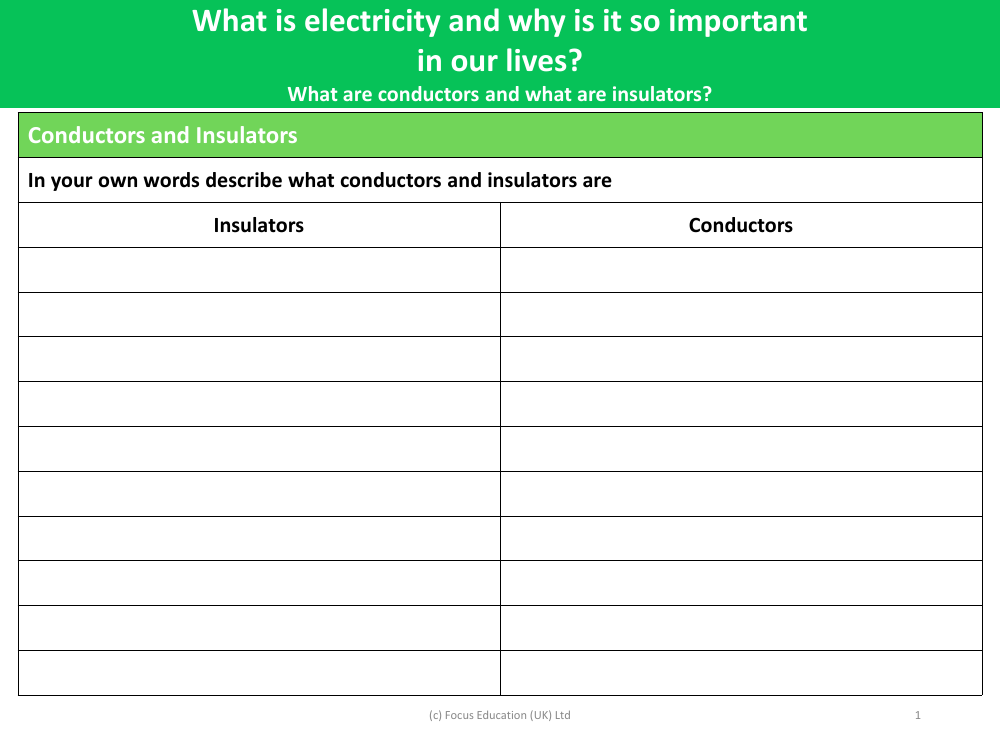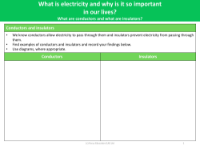Conductors and insulators - Writing task

Science Resource Description
Conductors and insulators are two categories of materials that behave differently when it comes to their ability to transmit electricity. Conductors are materials that allow electric current to flow through them with ease. They have free electrons that can move around, making them efficient at transferring electrical energy. Common examples of conductors include metals such as copper, aluminium, and silver. These materials are often used in electrical wiring and components because of their high conductivity. On the other hand, insulators are materials that resist the flow of electric current. They have tightly bound electrons that do not move freely, which prevents electricity from passing through them readily. Insulators are used to protect us from the dangerous effects of electricity by covering or surrounding conductive materials, examples of which include rubber, glass, and plastic.
Electricity is a form of energy that is fundamental to our modern lives. It powers our homes, businesses, and many of the devices we rely on daily, such as lights, appliances, and computers. The availability and control of electricity have been key to advancements in technology, healthcare, and industry, making it one of the most important discoveries in human history. Understanding the roles of conductors and insulators is crucial in the safe and efficient use of electricity. Conductors help in distributing electricity to where it is needed, while insulators protect us by preventing unintended flow of electric current, thereby reducing the risk of electric shocks or fires. The proper use of both conductors and insulators is essential for the safe operation of electrical systems.



